
The Middle Ages have the reputation of being technologically stunted and lacking the spirit of innovation we associate with all other historical eras. Frankly, this couldn’t be further from the truth. The period from the fifth to the fourteenth century marks several of the most significant technological innovations in human history like watermills, mechanical clocks, eyeglasses, and heavy-duty plows.
These groundbreaking inventions prove the Middle Ages were not so “dark,” after all!
1. Paper Money
2. University
3. Hourglass
4. Mechanical Clock
5. Oil Paint
6. Central Heating
7. Wine Press
8. Heavy Plow
9. Cranes
10. Rib Vault
11. Mill
12. Spectacles
13. Spinning Wheel
14. Public Library
15. Movable-type Printing Press

Even though contemporary societies increasingly rely on cards and digital currencies, many of us still feel safer when our wallets are stuffed with good old cash.
Have you ever wondered how and when we got paper money, in the first place?
The invention of national paper currency can be traced back to medieval China. The first paper money was introduced in the 10th century during the Song dynasty (960-1279), and for a very practical reason too. Due to a copper shortage in the country, coins were replaced by dark blue printed notes called guans in several denominations.
European traders and travelers encountered guans on their travels and brought news about these Chinese paper banknotes in the 13th century. Still, paper currencies wouldn’t be used in Europe for another 300 years after that.

The concept of a university is a completely medieval invention. The very first universities in Europe emerged in the 11-13th centuries based on medieval schools called studia generalia that set out to educate students beyond religion.
The earliest proper university was founded in the 11th century at Bologna, and it was quickly followed by the University of Paris circa 1150-1170. It was the latter that served as the model for other early universities, including the Universities of Oxford and Cambridge which were also founded around this time.
The interesting fact about these early universities is that they were considered independent. The university president (called a rector) was even elected by students and staff members. However, this also meant that these institutions had to finance themselves, so students had to pay tuition.
Early medieval universities played a massive role in the rise of literacy in the Middle Ages and beyond. Not only did they play a pivotal role in the Scientific Revolution, but many of them remain the hubs of global innovations today.
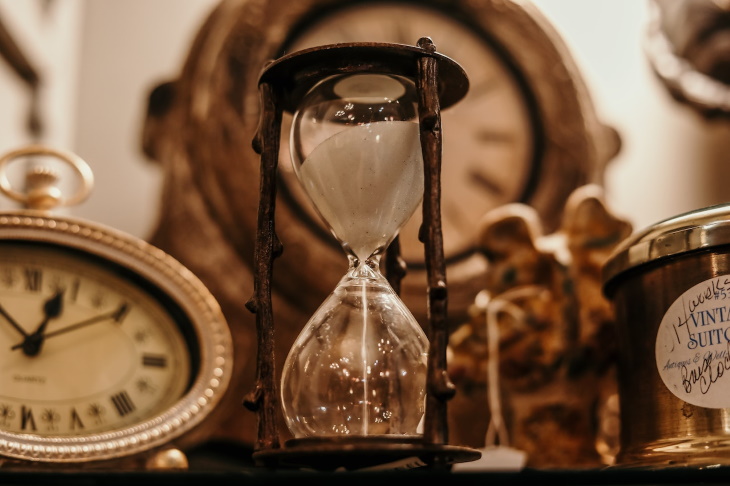
In the contemporary world, the hourglass has an aesthetic purpose rather than a practical one - with a few cute exceptions like the "egg timer" or the Pictionary sand clock. This was not the case in the Middle Ages when a sandglass was often the only reliable and accurate way to measure time. You’d see these early time-measuring devices in churches, on ships, and in an industrial setting.
The first record of the hourglass dates back to the 8th century. It is said to have been crafted by the Frankish monk Liutprand from the Chartres cathedral in France. We don’t see any records of the device being widely used until much later - a fresco called Allegory of Good Government from 1338 by Ambrogio Lorenzetti.
Compared to its predecessor - the water clock - the speed of sand flow in the hourglass was not affected by temperatures and movement, so these clocks were a true medieval innovation.

The hourglass didn’t rule the world of time-keeping for long, as already in the late 13th century, church records across Europe started referencing a new type of clock called a horologe. We know these devices as mechanical clocks today. Chances are, you have one or two in your very home.
Historians have no idea who invented the first mechanical clock, nor when and where that new type of clock was devised. We only know that these mechanical clocks took Europe by storm. In a matter of a century, large weight-driven clocks were installed on towers in England and France, and wealthy merchants and scientists owned smaller mechanical clocks.
This time coincides with a peaked scholarly interest in astronomy and astrology, which is why more sophisticated clocks had moving dials or hands that showed the time in various systems and included astronomical information to recreate the movements of the universe. Many of these clocks also had extravagant details and even automata. The Astronomical Clock in Prague is a famous and beautiful example of such Medieval craftsmanship.
Mechanical clocks became the most accurate and widespread timekeeping device until the invention of the pendulum clock in 1656.

Art history would be very different without the development of oil paints. This is a type of paint made by mixing dry pigments with oils, most often linseed oil, that can then be thinned out with the use of turpentine. As a result, you have slow-drying paint of unsurpassed textural variety and opaqueness that can be easily adjusted, layered, and tinkered with indefinitely to the artist’s desire.
And if it wasn’t for the Dark Ages, the world would probably never see some of the most renowned paintings in history, be it Leonardo’s Mona Lisa or Van Gogh’s Starry Night.
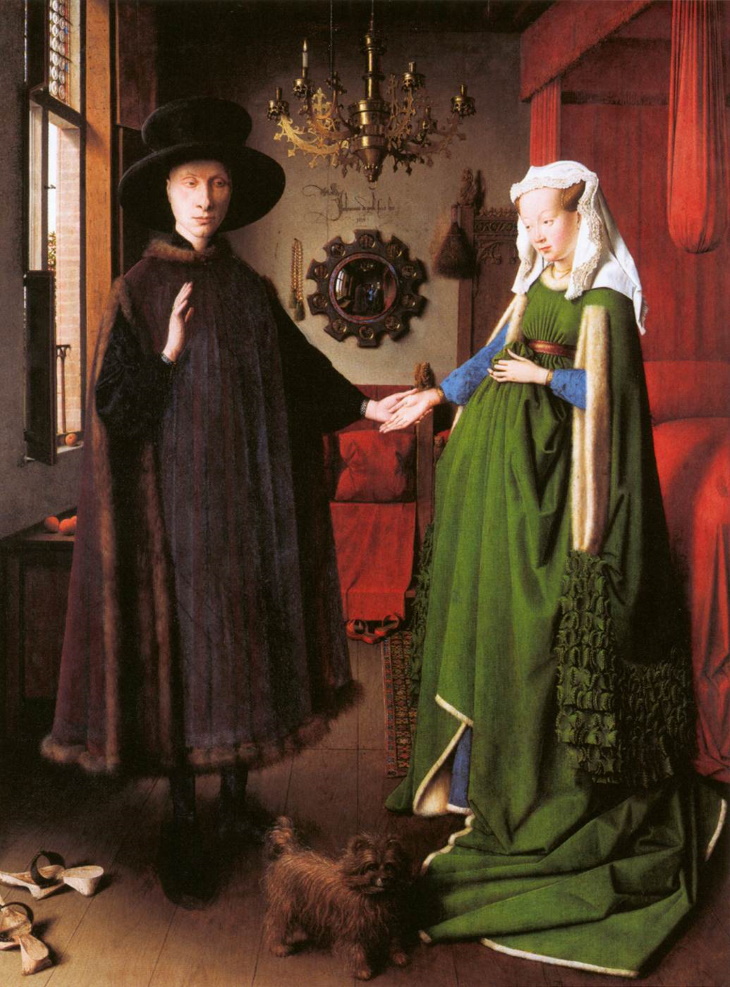
Recent research traced back the origins of oil paint to the ancient caves in Bamiyan, Afghanistan. The walls of the cave systems are covered in Buddhist murals created by an unknown artist sometime in the 7th century. The artists mixed pigments with walnut or poppy seed oil, so this is the first ever instance of an oil painting.
In Europe, oil paint would not appear until the 13-14th centuries. It would first be used to add a glossy finish to wooden furniture and tempera paintings. This technique is showcased in the glossy and beautifully saturated colors in Jan van Eyck’s paintings.

Floor heating is something most of us associate with modern times. As unbelievable as it may sound, many Medieval buildings utilized a very similar central heating system throughout the Dark Ages.
This new technology was an improvement of the Roman hypocaust, a system of floor channels used to heat water in bathhouses. Called the heat storage hypocaust, this Medieval floor heating technology used hot air that traveled from a furnace room to a system of underfloor channels. Firing the furnace just once could keep a large room warm for days. For example, the hypocaust at the Reichenau Abbey in Germany could efficiently heat the 300 square meters (3,230 sq ft) large assembly room warm all winter.
Research on the subject is ongoing, but over 500 medieval hypocausts were already found across Europe, mainly in Germany, Sweden, Finland, Denmark, Estonia, Lithuania, Latvia, and Poland. These heating systems spread from castles and monasteries to public buildings and even private homes. In Tallinn, the capital of Estonia, historians found 54 hypocausts, which suggests that in some cities, such floor heating was the norm and not the exception.
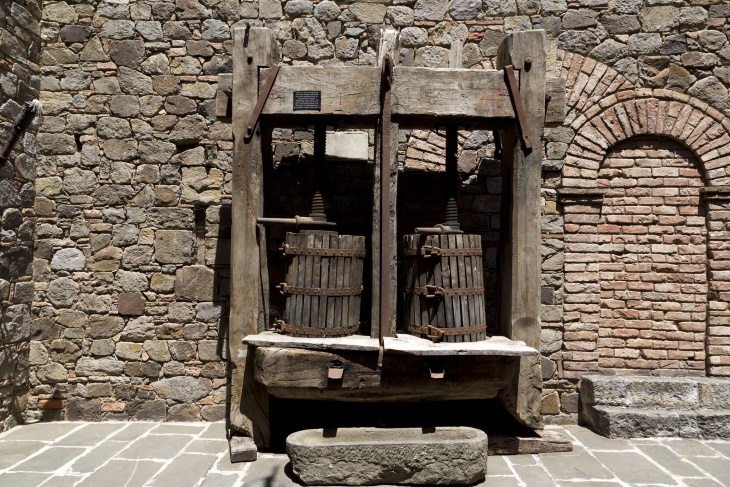
Let’s all collectively say thank you to medieval monks for inventing the basket wine press. In the Middle Ages, religious orders owned most vineyards in France and Germany. These vast lands produced large quantities of grapes and were a major source of income, so monks had to use their ingenuity and invent the most efficient and time-saving methods of producing wine from grape to bottle. And so they did, inventing the basket wine press sometime in the 12th century.
Even though most of us are not intimately involved in winemaking, we all understand that one needs to crush and juice large quantities of grapes to get wine. A wine press allowed hard-working medieval monks to produce more wine with less work.
The device looks like a large wooden basket bound together by metal rings. One would pack the wine press with crushed grapes and then place large wooden discs to compress and squeeze out as much grape juice as possible. Grape juice would escape through the gaps in the basket and get collected to be further sifted and brewed into wine.

The winepress was one of many farming innovations of the era. Since the majority of people were engaged in agriculture, such advancements were truly revolutionary. Few farming technologies had a greater impact than the invention of the heavy plow in the 9th century.
One specific plow type common at this time was the carruca - a heavy plow with a heavy iron plowshare that allowed one to dig deep into the soil and turn clay soil with ease.
Unlike earlier plows that were better suited for the light and sandy soil of the Mediterranean, the heavy plow optimized farming heavy clay soil found across northern Europe. Clay soil is more fertile than sandy soil, so this innovation also increased crop yields immensely and led to an economic upturn all across Northern Europe.
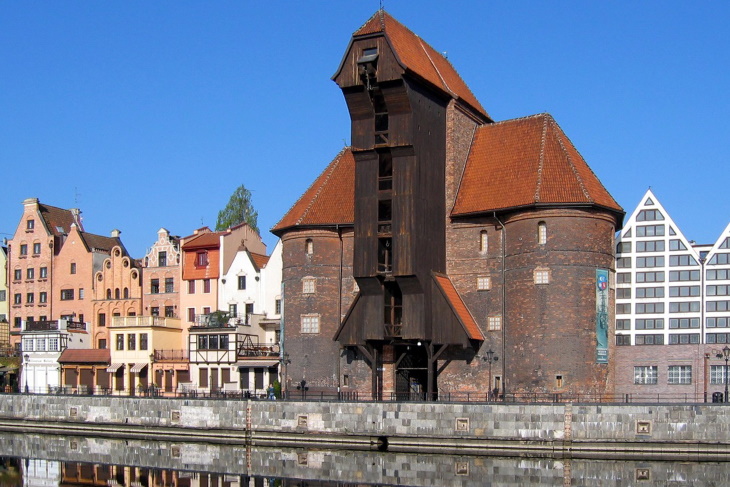
It’s tough to overestimate the potential of a device that can lift heavy loads, and cranes do exactly that. The two types of cranes developed during the Dark Ages were the stationary harbor crane and the treadmill crane. Let’s tell you all about these two pivotal technologies.
Stationary harbor cranes were first documented in Utrecht, the Netherlands, in 1244. These were built on docksides for loading cargo. Treadmill cranes were mobile devices, so they were used in construction works, especially while building castles and cathedrals. These cranes were used in Europe starting from the 13th century.
Both devices were extremely useful and widespread in the Middle Ages. These industrial machines were quite commonplace on large construction sites, mines, and harbors.
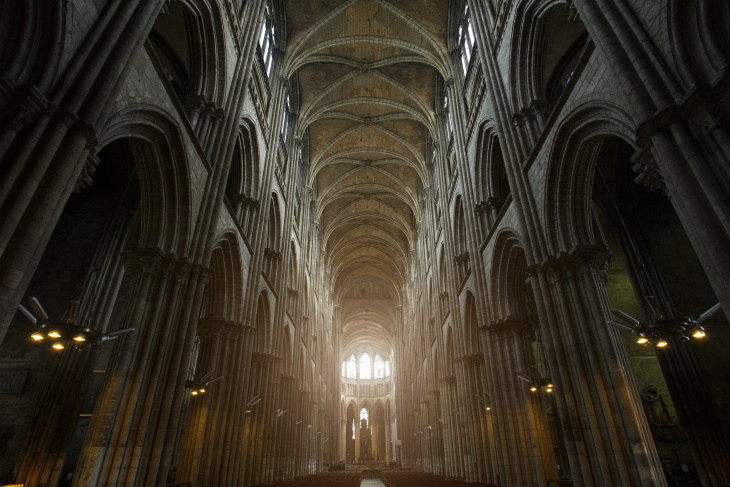
We would be remiss if we didn’t mention at least one architectural innovation of the Middle Ages. After all, the ultimate symbol of medieval times is the Gothic cathedral.
If you ever wondered how medieval builders were able to build structures that seemingly reached the sky, the answer to that question is the rib vault. In architecture, the rib vault refers to a row of many arches or ribs that form the foundation on which the roof and ceiling can be laid. Rib vaults are made of two or three intersecting vaults that are much lighter than traditional barrel vaults.
Combined with the innovation of flying buttresses, rib vaults gave Gothic buildings a taller, brighter, and more open appearance. These buildings were also stronger than their predecessors, as evidenced by many Gothic buildings that still stand today. Just look at the tall and spacious interior of the 13th-century Reims Cathedral in the image above.
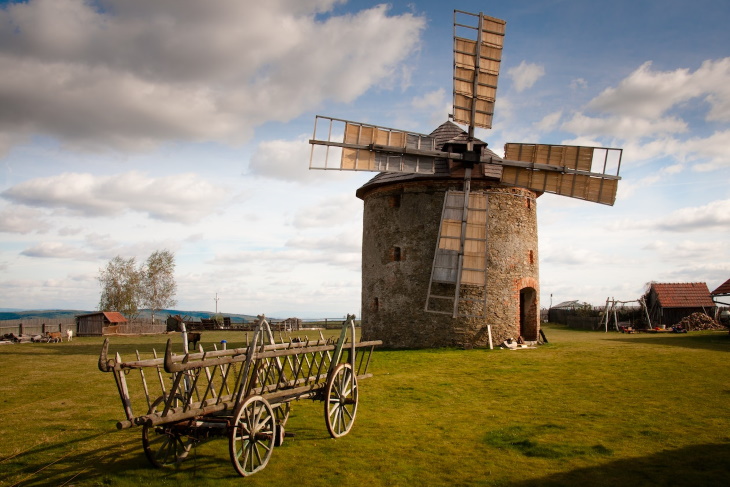
Watermills and windmills have existed since ancient times. These mills were extremely useful and efficient at grinding grain into flour or draining water.
Among the earliest examples of watermills in Europe are 6th-century tidal mills excavated on the Irish coast. They were built during Ancient Roman times. Amazingly, these early mills were quite powerful for their time. For instance, the tidal mill near the Nendrum Monastery from 787 could easily develop 7-8 horsepower.
A few centuries later, the first vertical windmills were constructed in Europe. The oldest post mills date back to the 1180s. There are records of a vertical windmill in Yorkshire, England, from 1185. Tower mills were developed a century later, and the technology would continue developing all across Europe, especially on the British Isles.
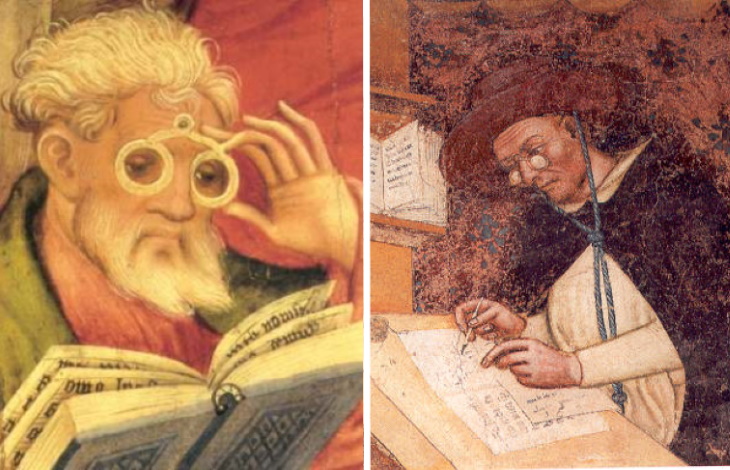
Archeologists suspect Ancient Romans may have used magnifying glasses for reading, but wearable spectacles did not appear until the Middle Ages. The first eyeglasses were developed in Florence, Italy, during the 13th century. There was one major limitation - these early glasses were convex, so they could only help correct far-sightedness. Concave lenses were invented two centuries later.
In 1305, Dominican Friar Giordana da Pisa wrote in a sermon: "It is not yet twenty years since there was found the art of making eyeglasses, which make for good vision..." What an exciting invention this must have been at the time!
Unfortunately, these early eyeglasses were not available to everyone; they were mostly by scholars and monks. They were also bulky and large and had to be held in front of the eyes or worn on the nose.
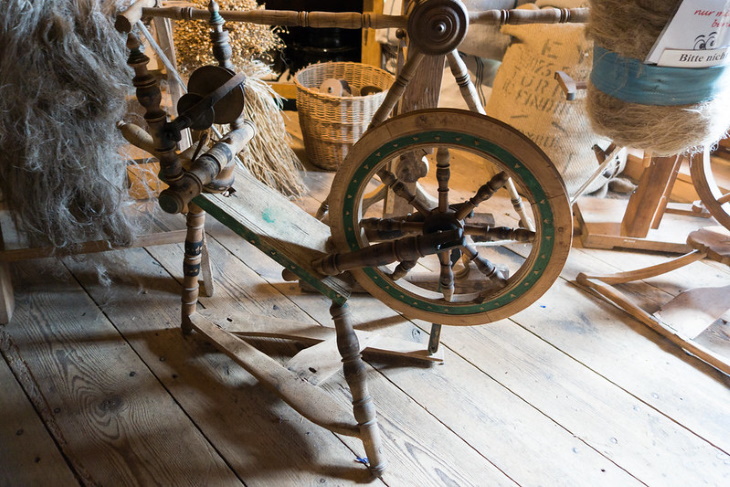
Mass-produced clothing wouldn’t be possible without this Indian invention. Although you may be familiar with the spinning wheel from European fairytales, the object itself was imported from India through the Middle East circa 1400. Researchers believe the spinning wheel was invented in India sometime between the 5-10th century. From there, it traveled to China in the 10th century and later to Europe.
Before the spinning wheel, woolen fibers had to be plucked out of a ball of wool and twisted by hand into a continuous thread onto a spindle. The spinning wheel speeds up the spinning process considerably, as the wheel’s rotation automates the twisting process instead of spinning the thread manually. In early iterations, the wheel was spun by a hand or foot, but later on, it could be done by pushing a pedal.
The improvement of the spinning wheel directly contributed to the Industrial Revolution, as the cotton textile industry was one of the main driving forces of this historical transition.

For a society with endless knowledge at our fingertips, it’s difficult to appreciate the importance of a public library. But back in the day, in a world without the internet, smartphones, TVs, and magazines, a world where even books were considered a luxury, access to a library was a big deal. Therefore, it’s hardly surprising that the first known public library was opened in the country that jumpstarted the Renaissance - Italy.
The Malatestiana Library was opened in Cesena, Italy, in 1454 in Italy, and it still functions today. Unlike most libraries of the time that were largely closed off to the public, the Malatestiana Library was commissioned by the local aristocrat Malatesta Novello and given to the city municipality. The library allowed locals to borrow and read books completely free.

Speaking of books, let’s not forget to mention the other massive achievement that directly contributed to the spread of knowledge across Europe - Johannes Gutenberg's printing press.
Sadly, no records detailing Gutenberg's press have survived to the present day. Still, we know that, unlike previous presses that required carving whole pages of text, just like in woodblock printing, Gutenberg created a machine that used individual letters called types to arrange any text and mass-printing as many copies of it as necessary.
This made book printing not only quicker but also cheaper and easier. In hindsight, Gutenberg’s printing press also revolutionized language and directly contributed to history-changing events like the Protestant Reformation and the Enlightenment. In this way, the printing press is one of the most important inventions of the Dark Ages.